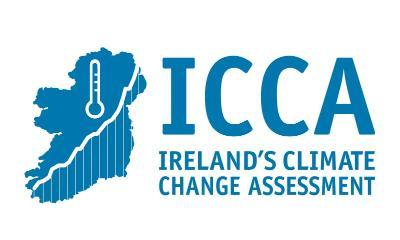
Summary for Policymakers, January 2024
Year: 2024
The Summary for Policymakers (SPM) provides key insights from Volume 1 of Ireland’s Climate Change Assessment: Climate Science – Ireland in a Changing World. Volume 1 focuses on the state of knowledge of the physical science basis of climate change, both globally and nationally.

Summary for Policymakers, January 2024
Year: 2024
The Summary for Policymakers (SPM) provides key insights from Volume 2: Achieving Climate Neutrality by 2050. Volume 2 addresses the achievement of climate neutrality by 2050.

Summary for Policymakers, January 2024
Year: 2024
The Summary for Policymakers (SPM) provides key insights from Volume 3: Being Prepared for Ireland’s Future Climate. Volume 3 covers the impacts we are likely to face and how we can prepare for these changes in an Irish context.

Summary for Policymakers, January 2024
Year: 2024
The Summary for Policymakers (SPM) provides key insights from Volume 4: Realising the Benefits of Transition and Transformation. Volume 4 highlights the benefits, opportunities and synergies that can be achieved through transformation, and how they can be realised.

Year: 2024
An independent commentary on Ireland's Climate Change Assessment.
Year: 2024
We have compiled this 'pack' to help planning authorities when carrying out strategic environmental assessments (SEAs). It is based on our experience to date, as a statutory SEA Environmental Authority under the SEA Regulations. It takes account of current 'best' practice in the SEA process. We update this pack regularly and we also refer to it during SEA Scoping consultations. It has been last updated in January 2024.

Hydrology bulletin on rainfall, river flows, lake levels, groundwater levels and spring outflows for December 2023; published, January 2024
Year: 2024
Hydrology Summary Bulletin for December 2023 outlining the flows in rivers, rainfall, lake levels and turlough levels, groundwater levels and spring outflows of over 300 stations across Ireland
Year: 2024
A survey of landfill sites to determine the quantity of methane flared and or recovered in utilisation plants for 2023

Draft Guidance on the Interpretation and Application of List of Waste Entries and Sub-Entries, December 2023
Year: 2023
Representatives from the Local Government Sector and the EPA have prepared Draft Guidance on the Interpretation and Application of List of Waste Entries and Sub-Entries. The aim of the guidance is to assist stakeholders to improve the consistency of data reporting at a local, Regional, National and European level. The document provides guidance on LoW chapters and sub-chapters that contain LoW entries where it has been identified that challenges exist. This includes all sub-chapters where sub-entries have been created. The draft guidance currently focuses on LoW entries under Chapters 2, 14, 15, 16, 17, 19 and 20. It provides clarity on waste types that should be classified under relevant LoW entries and sub-entries listed therein.

Year: 2023
This supporting document contains a dictionary and provides associated supporting information to the CCIM.

Hydrology bulletin on rainfall, river flows, lake levels, groundwater levels and spring outflows for November 2023; published, December 2023
Year: 2023
Hydrology Summary Bulletin for November 2023 outlining the flows in rivers, rainfall, lake levels and turlough levels, groundwater levels and spring outflows of over 300 stations across Ireland

Year: 2023
This document aims to provide guidance and ideas on how to take landscape considerations into account when carrying out strategic environmental assessments (SEA) of plans and programmes in Ireland.
Year: 2023
This report gives the data highlights on waste generation and management in Ireland in 2021. Key trends and progress towards upcoming EU targets, along with information on material consumption and circularity are provided. A new spotlight section focuses on current topics in the circular economy area. An update to circular economy actions published in 2022 is given along with further actions that government, industry and individuals can make to help us transition towards a circular economy.

Hydrology bulletin on rainfall, river flows, lake levels, groundwater levels and spring outflows for October 2023; published, November 2023
Year: 2023
Hydrology Summary Bulletin for October 2023 outlining the flows in rivers, rainfall, lake levels and turlough levels, groundwater levels and spring outflows of over 300 stations across Ireland
Clean Air – Vital for our Health, October 2023
Year: 2023
Agenda for the National Air Event on 15 November 2023

Year: 2023
This report provides an overview of urban waste water treatment in Ireland during 2022. It identifies the priority issues that Uisce Éireann must address to protect our environment from the harmful effects of waste water discharges.